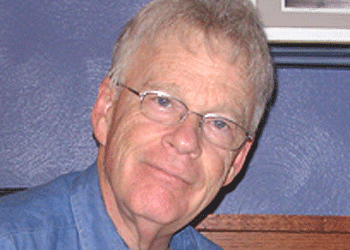From the NERW Archives
Yup, we’ve been doing this a long time now, and so we’re digging back into the vaults for a look at what NERW was covering one, five, ten and – where available – fifteen years ago this week, or thereabouts.
Note that the column appeared on an erratic schedule in its earliest years as “New England Radio Watch,” and didn’t go to a regular weekly schedule until 1997.
One Year Ago: November 28, 2011 –
*Over the last few years, we’ve spent a lot of time chronicling the gradual disappearance of AM radio in CANADA. Since the CRTC began routinely allowing AM stations to migrate to the FM band more than a quarter-century ago, the AM band has fallen all but silent everywhere outside Canada’s biggest cities, leaving sizable communities such as Halifax, Moncton, Sherbrooke, Kingston and Sudbury with no AMs at all.
But as the Canadian FM dial, once sparsely populated, has filled to bursting, broadcasters seeking dial space in a few of the largest Canadian cities are turning back to the AM band, and this week we can report on new AMs coming to both the Toronto and Montreal markets in the months to come, as well as a new format that’s about to make a big splash on the Canadian AM dial.
In the Greater Toronto Area, the CRTC approved a brand-new facility last week: sports marketing agent Elliot Kerr (on behalf of a corporation to be incorporated) will get 2 kW days/280 watts at night on 960, serving Mississauga. That’s a frequency that has never before been used in Toronto, though it did see use 80 km to the west in Cambridge, where CFTJ/CIAM used 960 from 1977 until it moved to FM in 1998 (it’s now Corus’ CJDV 107.5).
In its new Mississauga incarnation, 960 will be a local station for an area that’s struggled to retain a local media identity. While Mississauga is Canada’s sixth-biggest city, boasting a population of more than 700,000, it’s always been very much in the shadow of the much bigger Toronto media right next door. Broadcasters have tried to serve Mississauga in the past, most notably in the form of the Caine family’s CJMR (first on 1190, later on 1320) in the 1970s and 1980s, but the call of the larger Greater Toronto market has been hard to resist – which is why CJMR is now a full-time ethnic outlet with Toronto’s skyline at the top of its website. There’s not even a local daily paper serving the city; the parent company of the Toronto Star puts out a thrice-weekly freebie and that’s it.
And while Astral (which owns several Toronto stations) commented on Kerr’s application, suggesting that he should be barred by condition of license from marketing to Toronto or other nearby communities such as Oakville, Kerr says the signal limitations of his proposed facility will force him to be Mississauga-only. Kerr says the signal was specifically designed to avoid reaching most of Toronto even by day, and he says it will have trouble serving all of Mississauga at night. Despite those limitations, Kerr has ambitious programming plans that include 126 hours a week of news and talk, most of it live and local and “including coverage of city council, local business issues, and community related political and social events.”
Can Kerr succeed where others have failed? While his application predicts revenue of more than $7 million within five years, his new station will face plenty of challenges – but being on the AM dial might not be as much of an obstacle as one might assume: listeners in the area are already trained to find the middle of the AM band by listening to top-rated stations such as Astral’s CFRB (1010), which will become the next-door neighbor to Kerr’s new AM 960. (For some listeners in the GTA, the new 960 signal might be an obstacle, too: it will block some Toronto-area reception of Buffalo’s WNED 970, which has been the only broadcast source for NPR news in the region – but with WNED’s news-talk programming set to move to WBFO 88.7 next year anyway, it’s not clear how much longer 970 was going to remain a Toronto NPR option. If WNED intends to sell the 970 signal, though, the presence of the new 960 in Mississauga could make 970 less desirable for would-be purchasers hoping to hit a cross-border audience…)
The new 960 signal is planned for a site on Cancross Court, off Hurontario Street near the 401 interchange.
*If AM is staying alive in the Toronto area, it’s crawling back from near-death in Montreal. Over the last two decades, we’ve chronicled the demise of most of the mass-market AM signals that once dominated the field in Canada’s largest Francophone community: the Telemedia-Radiomutuel merger that silenced CJMS (1280) in 1994, the demise of CKLM (1570) the same year, the CBC/Radio-Canada moves to FM in 1999 that took away CBF (690) and CBM (940), the subsequent moves of CKVL (850) and CIQC (600) to the former CBC frequencies, the sudden silencing of those new 690 and 940 signals (now CINF and CINW) in early 2010, and then the equally sudden silencing of French-language sports on CKAC (730) earlier this year to clear the way for a provincially-subsidized all-traffic service. That left just a pair of English-language players keeping the AM band alive: Astral’s market-dominant CJAD (800) and Bell’s “TSN Radio” sports outlet, CKGM (990), along with a motley assemblage of smaller signals broadcasting to niche audiences.
As of last week, that picture is about to change, and in a pretty dramatic way. The CRTC’s approval of three AM applications in Montreal not only promises more options for Anglo- and Francophone listeners, it also sets the stage for still more AM frequencies to come back into play in Montreal.
Here’s how it all plays out:
The two biggest signals on the table were the clear-channel facilities at 690 and 940 that were abandoned by Corus when it took CINF and CINW silent in 2010, and after expecting to end up with both of them without a competitive hearing, Cogeco emerged from the CRTC’s speedy decision-making process with neither. As Montreal media writer Steve Faguy (who’s quickly becoming a must-read) noted in his excellent analysis of the Commission’s decision, Cogeco may have overplayed its hand by insisting that only those two 50 kW facilities would be suitable for the all-traffic formats it’s trying to put on the air. (The French version ended up on CKAC 730 when Cogeco abandoned its 690 application; the English version was to go on 940, with Cogeco telling the CRTC it would accept no substitute.)
 Instead, 690 goes to Bell, which will make that frequency the new non-directional home of its “TSN Radio” CKGM, vacating the directional 990 signal that, CKGM says, prevents the station from being heard well in the West Island neighborhoods where much of Montreal’s Anglo community lives. Instead, 690 goes to Bell, which will make that frequency the new non-directional home of its “TSN Radio” CKGM, vacating the directional 990 signal that, CKGM says, prevents the station from being heard well in the West Island neighborhoods where much of Montreal’s Anglo community lives.
The move to the big 690 signal will make that frequency English-speaking for the first time in its Montreal history, and it will give CKGM’s Canadiens coverage a wide reach over most of Quebec and the northeastern U.S. at night. (There’s already some sentiment out there calling on Bell, which also owns CTV outlet CFCF-TV, to restore the historic “CFCF” callsign to radio when it moves the station down the dial next year.)
The 940 signal, meanwhile, will flip from a long heritage as an English-speaking outlet to French when its new occupant, the Tietolman-Tétrault-Pancholy partnership, launches a French-language news-talk station there…assuming, of course, that the group doesn’t stand by its own ultimatum to the CRTC, in which it had originally insisted it needed both French and English signals to make its plans for a new Montreal radio group successful.
 The Tietolman-Tétrault-Pancholy plans were by far the most ambitious to come before the CRTC in this set of hearings: the group proposed a pair of stations with a staff of more than 150 and annual budgets of more than $5 million. (Partner Paul Tietolman knows all about big-staff, full-service radio in Montreal: he’s the son of Jack Tietolman, who built the old CKVL 850 into a top-rated, top-notch station before selling it to Metromedia…which, ironically, ended up putting the station – by then CINF 690 – into the hands of Corus and eventually shutting it down, opening up the frequencies for which Paul Tietolman was applying. But we digress…) The Tietolman-Tétrault-Pancholy plans were by far the most ambitious to come before the CRTC in this set of hearings: the group proposed a pair of stations with a staff of more than 150 and annual budgets of more than $5 million. (Partner Paul Tietolman knows all about big-staff, full-service radio in Montreal: he’s the son of Jack Tietolman, who built the old CKVL 850 into a top-rated, top-notch station before selling it to Metromedia…which, ironically, ended up putting the station – by then CINF 690 – into the hands of Corus and eventually shutting it down, opening up the frequencies for which Paul Tietolman was applying. But we digress…)
With such an ambitious plan to make local radio relevant again, how could the CRTC have said no – even if there was plenty of doubt about whether Tietolman-Tétrault-Pancholy could live up to their big business promises? But as Faguy notes, the CRTC also hedged its bets by awarding TTP only one of the two big 50 kW channels, in effect calling the group’s bluff to see whether it will go forward with only a French-language signal on 940 and no English on 690.
And then there’s 990: unlike past CRTC proceedings, in which AM stations have been allowed to upgrade to better frequencies while leaving their old channels silent (as with the CFCF/CKVL moves from 600/850 to 940/690 more than a decade ago), this time the Commission is immediately assigning a new occupant to the 990 frequency being vacated by CKGM’s move to 690. With neither Cogeco’s traffic application or the Tietolman-Tétrault-Pancholy group expressing a willingness to use the 990 frequency, it goes (almost by default, says Faguy) to the last party standing: the Toronto-based Evanov group, which will use the channel for “Radio Fierté,” a French-language version of “Proud FM” (CIRR 103.9), its Toronto signal aimed at gay and lesbian listeners. Evanov’s application had called for the use of 690, diplexing on the CJAD (800) towers south of Montreal, and it’s not yet clear whether they’ll try to use that site for 990, or whether they’ll attempt to use Bell’s current CKGM 990 facility. While that South Shore site will remain in use for CKGM’s new two-tower 690 operation as well, the CRTC ordered Bell to make it available for a new 990 signal as well, with lease terms to be decided via arbitration. (On 940, the TTP group plans to build two new towers at the South Shore site of CJMS 1040, which in turn is the old location of CKGM when it was on 980.)
The CRTC isn’t done with Montreal AMs: it told the applicants that it will entertain new applications for the use of other vacant Montreal AM channels, including the 600 and 850 frequencies vacated by CIQC and CKVL. (To clear that path, the CRTC dismissed several lower-powered AM applications last week, including one for a religious signal on 600.) Assuming Cogeco reapplies for an English-language traffic service, it seems likely that 600 will be the next frequency it applies for; the old four-tower 600 site in Kahnawahke still stands vacant, having been used later on by CINW/CINF and transferred to Cogeco when it bought Corus’ Quebec operations last year. That’s a desirable site for English-language operators aiming at the West Island, but the Tietolman-Tétrault-Pancholy group has complained that Cogeco has been unwilling to make it available on competitive terms. So would Tietolman attempt to reclaim the 850 frequency where his father made CKVL famous? As always…stay tuned.
*Crossing the border, we start our Thanksgiving-shortened news report in PENNSYLVANIA, where there’s more good news for defenders of old-school AM radio: Clear Channel is bringing back a venerable callsign and format in Philadelphia.
For many decades, WDAS (1480 Philadelphia) overcame a lousy directional pattern and low power to become the voice of the city’s black community. Civil rights leaders such as Martin Luther King, Jr. and Malcolm X made regular visits to the WDAS studio/transmitter site at the city’s edge to spread news and call for change, and the station built an outsized reputation as a major player in black radio through the 1960s and 1970s. That audience eventually segued over to WDAS-FM (105.3), and after experimenting with black gospel, 1480 flipped to Spanish-language programming a few years back as “Rumba 1480,” WUBA. (That format had migrated down the dial from 104.5 FM, now WRFF.)
Now WUBA is history, and WDAS(AM) is back. Clear Channel relaunched the station on Wednesday with a mix of Christmas soul music, but after the holidays are over it will segue into a full-time classic soul format programmed by Joe “Butterball” Tamburro, whose roots with WDAS go back more than four decades. Like WUBA, the new WDAS will also be heard on the HD2 channel of Clear Channel sister WISX (106.1 Philadelphia).
*A station sale in upstate NEW YORK: EMF Broadcasting ended up with one station more than it needed to serve the Utica market, and now it’s unloading its original signal there. The station on 100.7 was WVVC when EMF bought it for $1.25 million back in 2001, and it spent most of the next decade as “K-Love” outlet WKVU before a flip last December moved K-Love and the WKVU calls to the much bigger 107.3 signal, at which point the smaller 100.7 facility became an “Air 1″ outlet as WRCK.
Now EMF is unloading the 100.7 facility – but not the WRCK calls or the tower site southeast of Utica – to Roser Communications Network, which will pay $425,000 for the 1.6 kW/623′ class A facility. Roser isn’t saying yet what its plans are for the new addition, which will join “Kiss” simulcast WSKS/WSKU, “Bug Country” WBGK and the WUTQ combination that includes two AMs (WUTQ 1550/WADR 1480) and an FM translator. Could 100.7 become the new WUTQ-FM?
If you missed last month’s Audio Engineering Society panel discussion marking the 50th anniversary of FM stereo, the audio has now been made available at the AES website. Having moderated the event, I’m more than a little biased, of course – but it really was an amazing event, with contributions from a remarkable cross-section of engineering talent that included Dick Burden, the last surviving member of the 1961 standards-setting panel, as well as processing gurus Bob Orban, Frank Foti, Eric Small and Bill Sacks and many, many more. It’s unlikely a group like that will ever again come together in one place, and it was truly an honor to be able to participate.
Five Years Ago: November 26, 2007 –
*Entercom won’t have to wait until Christmas to open the present that arrived in its mailbox on Black Friday: after more than a year of waiting, the company finally has FCC permission to add to its upstate NEW YORK holdings by purchasing CBS Radio’s Rochester cluster, a deal that’s part of a $220 million package that also includes CBS stations in Memphis, Cincinnati and Austin. As expected, the approval comes with some conditions: because Entercom already owns three FM stations (WBEE-FM 92.5 Rochester, WFKL 93.3 Fairport, WBZA 98.9 Rochester) and one AM (WROC 950 Rochester) in the market, it can’t absorb CBS Radio’s four FMs (WZNE 94.1 Brighton, WCMF 96.5 Rochester, WPXY 97.9 Rochester, WRMM-FM 101.3 Rochester) without going over the ownership caps that would limit the company to no more than five FMs. As expected, the approval comes with some conditions: because Entercom already owns three FM stations (WBEE-FM 92.5 Rochester, WFKL 93.3 Fairport, WBZA 98.9 Rochester) and one AM (WROC 950 Rochester) in the market, it can’t absorb CBS Radio’s four FMs (WZNE 94.1 Brighton, WCMF 96.5 Rochester, WPXY 97.9 Rochester, WRMM-FM 101.3 Rochester) without going over the ownership caps that would limit the company to no more than five FMs.
What held up the approval for so long? (The initial transfer application was filed back in August 2006.) There were a few factors: perennial Entercom opponent Royce International, which has been trying for years to undo a deal it made to sell a Sacramento FM station to the company, threw every objection in the book against the deal, including the infamous “Hold Your Wee for a Wii” contest that led to the death of a contestant at a different Entercom-owned Sacramento station. The FCC tossed out Royce’s complaints, referring the company to civil court to settle its long-running dispute with Entercom.
In the end, the big delay was the Rochester ownership-cap question. It’s worth noting that the CBS cluster in Rochester has its roots in a much earlier ownership-cap dispute, when the Justice Department first weighed in on the matter back in the mid-nineties as the old “one to a market” rules were falling by the wayside.
So it’s safe to say that this transaction has been on the DoJ’s radar screen since the beginning, and indeed it was just over a year ago – at the end of October 2006 – that Entercom, CBS and the feds agreed on a plan under which Entercom would “pursue” divestiture of three of the seven FMs, with the stations to be placed in trust if no spinoff deal was consummated within 60 days of FCC approval.
The FCC isn’t fond of issuing waivers these days, much preferring that stations go right into a trust if they’d exceed ownership limits. This time, though, with the enforcement power of the Justice Department at its back, the Commission agreed to a six-month waiver of the ownership limits, on the condition that Entercom continue to operate at least two of the stations under separate management from the rest of the cluster, and under the condition that Entercom file the application to put the stations into a trust right away, to be executed if they’re still not sold six months from now.
So how will this all play out in the real world? Even before the FCC granted approval of the deal, work was already well underway on expansion of Entercom’s High Falls studios, adding sales office space on the third floor and studio space for two more FMs on the first floor. For now, it appears that those two FMs will be classic rocker WCMF and top 40 WPXY, with the spinoff sales effort focused on AC WRMM and modern rock WZNE from the CBS cluster, as well as adult hits WFKL from the existing Entercom cluster.
It’s been a rough year for station sales, though, and at least from where we’re sitting, it would appear that most of the usual buyers haven’t been interested in paying the prices Entercom is seeking for the stations (especially big biller WRMM, routinely a top-three player in the market). For that matter, it seems like a reasonable guess that even some of the second-tier buyers (think EMF, which has been a vigorous buyer across the region) have had their chances to examine the stations, too, and haven’t made acceptable offers. Will Entercom have to lower its price? We’ll be watching closely…
Another bit of Rochester news before we move on: amidst all the local headlines in the last few weeks about the possible demolition of the Midtown Plaza complex downtown, there’s been very little said about the fate of one of its biggest tenants: the Euclid Building, one of several older office buildings that were incorporated into the plaza when it was built in the early sixties, is home to Clear Channel’s local radio cluster. That cluster almost moved out to suburban Greece a few years back – plans were drawn up, zoning permission obtained for an STL tower, and so forth – but a last-minute package of incentives persuaded Clear Channel to stay put and to embark on an expensive renovation project. (Suppose they’d be interested in the space CBS Radio now occupies a couple of blocks away in the HSBC Building?)
We should note, too, that plenty of older broadcasting history would crumble to dust if Midtown is demolished: the original WVOR (100.5) antenna still sits on a mast on the roof of Midtown Tower, which also housed WVOR’s studios in several locations, as well as studios for WBBF and its FM sisters. And another of the older buildings in the plaza, the B. Forman Building, was a later home for the WBBF cluster – which eventually became the Entercom cluster, and moved to High Falls a few years back.
(2012 update: Clear Channel did indeed end up moving into the former CBS space across the street after a full gut renovation. Midtown was largely demolished in 2011, including the Euclid and B. Forman buildings and the old WVOR mast, though the frame of Midtown Tower remained standing. And Oklahoma’s Stephens Media ended up buying the Entercom spinoffs.)
*There’s one more radio station in NEW HAMPSHIRE this week, though it’s not a “new station,” strictly speaking. Saga’s WSNI (97.7 Winchendon MA) has been edging its way north into the Keene market for a few years now, having moved its transmitter over the state line to Fitzwilliam. Now the class A signal has completed its move all the way into Keene, changing city of license from Winchendon to Swanzey and moving its transmitter to Keene’s West Hill tower site. That’s becoming a busy spot – not only is Saga’s WINQ (98.7 Winchester) already there, but Great Eastern’s WTSM (93.5 Springfield VT) has a pending CP to change its city of license to Swanzey and to move to West Hill as well.
The big news up on the Granite State’s highest point is, quite literally, electrifying: 70 years after broadcasting came to Mount Washington, there’s finally “shore power” up on The Rock. Bob Perry, chief engineer for Citadel’s WHOM (94.9 Mount Washington) and WPKQ (103.7 North Conway), tells NERW that the new power line that runs up the path of the incline railway on the mountain’s western flank was switched on last week, providing the first non-generator power that’s ever been available to the mountain’s broadcasters.
Ten Years Ago: November 27, 2002 –
Perhaps it seemed like a strange, post 9/11 aberration around this time last year, when dozens of stations (mostly AC and oldies) around the country ditched their usual playlists for an entire month to play nothing but Christmas music. Well…not so. In your editor’s other life as Webmaster of the 100000watts.com radio directory site, the flips have been coming fast and furious this year as well. In NERW-land, they start in PENNSYLVANIA, where Entercom’s 80s “Buzz” (WBZJ 102.3 Pittston/WBZH 103.1 Freeland) in the Scranton market, Clear Channel’s oldies WWSW (94.5) in Pittsburgh and Clear Channel’s AC “Sunny” (WSNI 104.5) in Philadelphia are all ho-ho-ho’ing already…. and now there’s word that WSHH (99.7 Pittsburgh) is also joining the party.
Speaking of Scranton/Wilkes-Barre, the changes keep on coming at the Citadel cluster there: the hot talk that had been on WEOZ (95.7 Olyphant) went away last week, as “Z-Talk” gave way to a simulcast of the top 40 from WBHT (97.1 Mountain Top). The only remnant of the “Z-Talk” format is Bob & Tom, who land in mornings on WARM (590).
MASSACHUSETTS is in the holiday mood, too; out on Cape Cod, WTWV (101.1 Mashpee) and WDVT (93.5 Harwich) have already made the flip to Christmas tunes, as has WSNE-FM (93.3 Taunton), which of course really serves Providence, RHODE ISLAND. Joining them after Thanksgiving will be WXKS (1430 Everett) in the Boston market, with more no doubt on the way.
WB affiliate WLVI (Channel 56) is losing one of its “Ten O’Clock News” anchors; Jeff Barnd joined Karen Marinella on the anchor desk in 1995 — and what with the shakeups on the VHF side of the dial, that made the pair the longest-running anchor team on the Boston airwaves at the moment. No word on what Barnd, whose contract runs until 2005, will do next…
Steve Solomon has been named the new VP/programming of Superadio Networks (the “Open House Party” folks); you probably know him as Steve McVie, director of operations for Cape Cod’s Makkay Broadcasting cluster. He starts his new job on December 2. Speaking of Cape Cod, “Cape Cod Christian Broadcasting” has been granted an LPFM on 97.7 in East Harwich.
Fifteen Years Ago: November 28, 1997 –
Radio Disney is finally on the air in MASSACHUSETTS. Boston’s WPZE (1260) changed hands last Friday afternoon, with new owner Hibernia unceremoniously ending the simulcast with Salem’s religious WEZE (590) and throwing the Mouse on air shortly after 4:30.
Over at CBS/Boston, veteran WBZ-TV (Channel 4) anchor Jack Williams did a turn on the radio side, filling in for WBZ (1030) talk host David Brudnoy Tuesday night in what some observers see as a test run for an expanded role for Williams at BZ radio. Down the hall at WODS (103.3), John Potter has joined the oldies station as the replacement for “Austin of Boston” in morning drive. Potter comes from a stint in Salt Lake City, with stand-up experience before that in Las Vegas.
Up in NEW HAMPSHIRE, Capstar continues to expand its portfolio. Nashua’s WHOB (106.3) is about to become Capstar’s latest Granite State outlet, starting with an LMA with owner Mario DiCarlo, and ending with what NERW hears will be a $4 million sale. Capstar owns WGIR AM-FM (610/101.1) in Manchester and WXHT (95.3 York Center), WHEB (100.3), and WTMN (1380) in the Portsmouth market, with the purchase of two more FMs from ARS/CBS pending. No word on potential changes to WHOB’s modern-CHR format.
And just in time for the holidays, the FCC had a nice little present for Bob Vinikoor of WNTK AM-FM (1020 Newport/99.7 New London), granting his application for 50 kilowatts day, 500 watts night on 720 kHz. Expect construction to start in a few months on this one. (2012 update: after another decade of effort, the 720 signal never did make it to air.)
Some new calls in RHODE ISLAND: Providence’s 790, ex-WLKW, WWAZ, and WEAN, is now WSKO, “the Score.” And 99.7 in Wakefield-Peace Dale, most recently WDGE, is now WXEX, matching its “99-7X” identity. We’re still waiting for the third part of this transaction, in which the WLKW calls officially go to WPNW (550 Pawtucket), which has been using them anyway for several weeks.
A CONNECTICUT station is about to return to the air. WMMM (1260) in Westport will be back in a few weeks, simulcasting sister station WSUF (89.9 Noyock NY) with NPR talk during the week, and simulcasting its other sister station, WSHU (91.1 Fairfield) on weekends.
A few tidbits from NEW YORK: Syracuse’s WOLF (1490) has filed for yet another frequency change. WOLF already holds a CP to move to 1510; now owner Craig Fox has applied to move WOLF to 1090, with 10 kilowatts by day and nothing at night. (2012 update: WOLF stayed put on 1490.) |






 As expected, the approval comes with some conditions: because Entercom already owns three FM stations (WBEE-FM 92.5 Rochester, WFKL 93.3 Fairport, WBZA 98.9 Rochester) and one AM (WROC 950 Rochester) in the market, it can’t absorb CBS Radio’s four FMs (WZNE 94.1 Brighton, WCMF 96.5 Rochester, WPXY 97.9 Rochester, WRMM-FM 101.3 Rochester) without going over the ownership caps that would limit the company to no more than five FMs.
As expected, the approval comes with some conditions: because Entercom already owns three FM stations (WBEE-FM 92.5 Rochester, WFKL 93.3 Fairport, WBZA 98.9 Rochester) and one AM (WROC 950 Rochester) in the market, it can’t absorb CBS Radio’s four FMs (WZNE 94.1 Brighton, WCMF 96.5 Rochester, WPXY 97.9 Rochester, WRMM-FM 101.3 Rochester) without going over the ownership caps that would limit the company to no more than five FMs.



